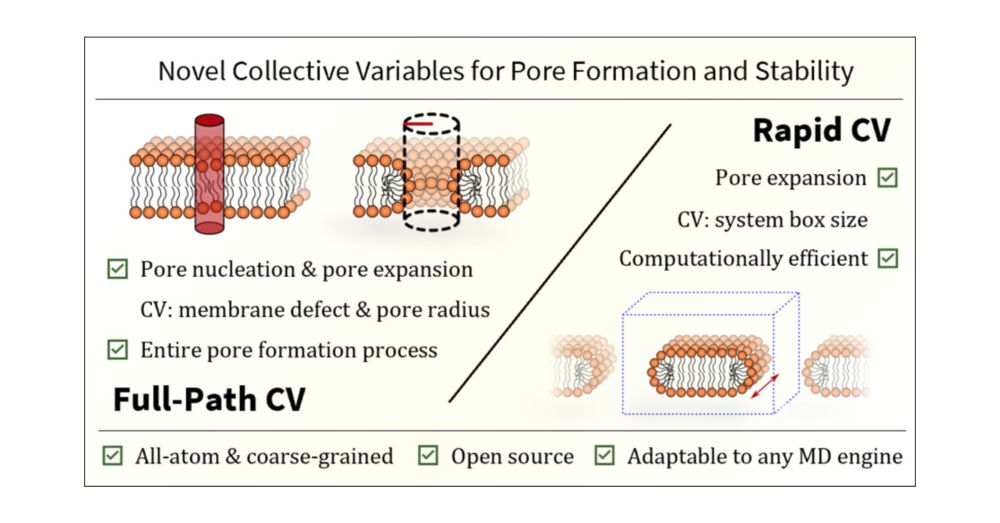Martini 3 Limitations in Phospholipid Flip-Flop
Phospholipid membranes serve as essential barriers in biological systems, and protein-mediated lipid flip-flop is a crucial process for lipid homeostasis in membranes, which is vital for various cellular functions. These phenomena can be studied using the Martini coarse-grained force field, a valuable tool for membrane simulations that balances computational efficiency with chemical accuracy while capturing key membrane properties. However, the accuracy of the newer Martini 3 force field in describing energetics of phospholipid flip-flop remains unknown. Here, we show dramatic differences in the free energy barriers of lipid flip-flop when simulated with Martini 3, Martini 2.2, and CHARMM36m force fields. Using umbrella sampling simulations of six phospholipids (POPC, DPPA, POPE, POPG, POPS, and DPTAP) in the POPC membrane, we demonstrate that Martini 3 predicts significantly lower flip-flop barriers compared to all-atom simulations and the older Martini 2.2 version, with particularly severe underestimation for the positively charged lipid (DPTAP). For DPTAP, we identified that altered Lennard-Jones parameters between choline and alkyl tail beads likely contribute to this discrepancy, as evidenced by our systematic parameter testing. These findings highlight limitations in the current Martini 3 parametrization that should be considered when studying processes involving molecular transport across membranes and suggest potential refinements to improve the model’s accuracy for such phenomena. To complete the picture, we also discuss the energetics of flip-flops of phospholipids with various lipid tail lengths (DLPC, DMPC, DPPC, DSPC) and lipid tail saturation (DOPC).









